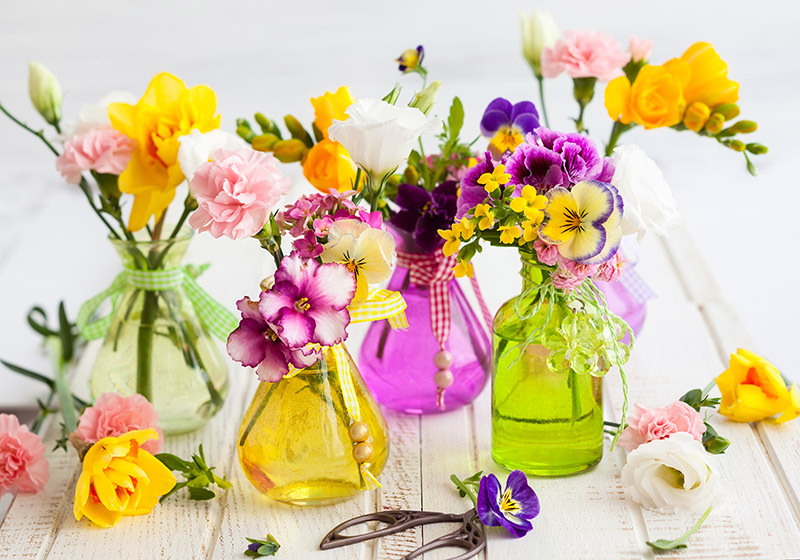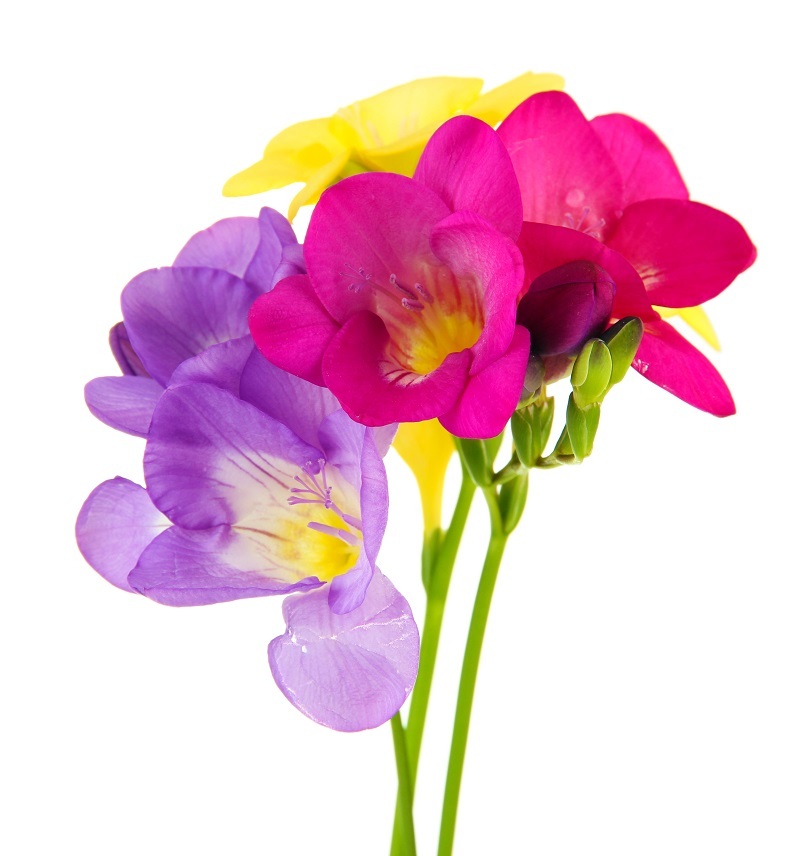Simple steps to ensure your blooms remain beautiful for longer
Posted on 21/08/2025
Simple Steps to Ensure Your Blooms Remain Beautiful for Longer
Flowers bring beauty, fragrance, and a splash of color into our lives. Whether adorning our homes, gracing our special occasions, or enhancing our gardens, blooms are more than just botanical wonders--they're mood enhancers and symbols of love, care, and celebration. However, their stunning appearance can be fleeting without the right attention. In this comprehensive guide, you'll learn simple yet effective ways to keep your blooms looking fresh, vibrant, and gorgeous for as long as possible. Read on to discover essential care tips, clever hacks, and expert advice for ensuring your loved flowers remain a beautiful sight for days on end.

Why Flower Longevity Matters
The lasting power of your flower arrangements isn't just about aesthetics. Whether you're celebrating milestones or cherishing everyday moments, longer-lasting flowers mean:
- More value for your money
- Prolonged enjoyment of their appearance and fragrance
- Less waste and more sustainability
- Stronger messages of affection or gratitude for the recipient
Investing a little care can make fresh flowers last much longer than you might expect. The following sections cover every aspect of flower upkeep--whether you're working with a bouquet delivered from a florist or homegrown garden blooms.
Choosing the Right Blooms for Longer Life
Not all flowers are created equal when it comes to longevity. Some blooms naturally last longer than others. If you want arrangements that stand the test of time, consider these tips:
Opt for Flowers with Extended Vase Life
- Chrysanthemums: Often top the list for durability, lasting up to three weeks.
- Carnations: Can hold their beauty for up to two weeks with proper care.
- Alstroemeria: These elegant blooms also have a reputation for lasting.
- Orchids: Certain types can stay fresh for weeks as cut flowers.
- Roses, lilies, and sunflowers: With appropriate care, these classic choices offer a good vase life.
If you're purchasing flowers, look for signs of freshness: tight (not wilting) buds, firm stems, and leaves free from blemishes or yellowing.
Preparing Blooms for Maximum Freshness
Trimming Stems: The Foundation of Flower Longevity
When you receive or buy a bouquet, the first thing you should do is trim the stems. Here's why and how:
- Why: Freshly cut stems absorb water much more efficiently, preventing early wilting.
- How: Use sharp scissors or a florist's knife and cut at a 45-degree angle. This increases the surface area for water absorption. Trim about 1/2 to 1 inch from the bottom.
- Tip: Re-trim your stems every two days for ongoing hydration.
Remove Leaves Below the Waterline
Any leaves that will sit below the surface of your vase water should be removed. This simple step prevents bacteria build-up, which can drastically shorten the life of your flower arrangement.
Water: The Lifeblood of Gorgeous Blooms
Use Clean, Fresh Water
Your flowers' water source is crucial. Always use fresh, room-temperature water for arranging your cut flowers. Change the water every 1-2 days to avoid stagnation, bacteria, and foul odors.
Flower Food: A Secret to Vibrant, Lasting Blooms
- Commercial flower food provides the right mix of nutrients, pH adjusters, and antibacterial agents to keep water clean and flowers nourished.
-
If you're out, DIY solutions include:
- 1 teaspoon sugar (for food), 1 teaspoon white vinegar (to inhibit bacteria), and a few drops of bleach (optional) per quart of water.
- Remember: Excess bleach or sugar can cause more harm than good--so always err on the side of caution.
Avoid Common Mistakes That Cause Blooms to Fade Faster
Keep Flowers Away From Heat and Sunlight
- Never place flowers near radiators, heaters, or in direct sunlight.
- Heat speeds up water evaporation and causes petals to wilt prematurely.
- Ideal placement: Keep flowers in a cool, shaded spot with indirect light.
Avoid Ethylene Gas: The Invisible Threat
- Fruits, especially bananas and apples, emit ethylene--a gas that encourages flowers to mature and die more quickly.
- Store your arrangements away from fruit bowls or pantries for optimal bloom longevity.
Extra Tips for Arrangements That Stay Fresh and Beautiful
Prune and Groom Regularly
- Remove dead or wilting petals and leaves every day to prevent the spread of mold and bacteria.
- This also helps the remaining flowers stay hydrated and healthy.
Refrigerate Overnight (When Appropriate)
- Florists often keep flowers in coolers--mimic this at home by placing arrangements in the fridge overnight.
- This is especially effective for roses and other chill-tolerant blooms.
- Aim for temperatures above freezing (around 4°C or 40°F).
Choose the Right Vase
- Make sure vases are thoroughly cleaned before use. Residual bacteria or leftover plant matter can quickly contaminate fresh water.
- Use a vase of appropriate size so that stems have room but aren't crowded together.
- Glass vases are preferable as they are non-porous and easier to sanitize.
Special Care for Specific Blooms
Roses
- Remove thorns carefully, if desired, to prevent bacterial growth.
- Roses are particularly susceptible to air blockages--recut stems underwater for maximum absorption.
Lilies
- Gently clip off pollen-laden anthers to prevent staining of petals and prolong blossom life.
Tulips
- Tulips grow (up to an inch!) even after being cut; trim frequently and use tall, supportive vases.
Orchids
- Require less water; mist lightly rather than overwatering the base.
- Avoid cold temperatures or drafts.
Boosting Garden Bloom Longevity
If you're cultivating a garden, certain practices help ensure flowers stay beautiful on the plant and after you cut them:
- Harvest blooms early in the morning when stems are full of water.
- Use sharp, sanitized shears to avoid bruising or crushing.
- Place freshly cut flowers in water as soon as possible to prevent air bubbles.
- Mulch plants to retain soil moisture and regulate temperature for healthier, longer-lasting blooms.
Summary: Easy Steps to Keep Your Flowers Fresh for Longer
- Pick naturally long-lasting flower varieties and prioritize freshness at purchase.
- Trim stems and remove lower leaves before arranging.
- Always use fresh, clean water and change it every 1-2 days.
- Supply nutrients and inhibit bacteria with commercial or homemade flower food.
- Display arrangements away from direct sun, heat, and ripening fruit.
- Prune and clean vases and flowers regularly.
- Refrigerate at night, if appropriate, to prolong freshness.
- Follow special advice for unique flowers like roses, lilies, and orchids.

Frequently Asked Questions
Can I add aspirin, soda, or coins to my flower water?
Some old-fashioned hacks suggest adding household items like aspirin, soda, or even copper coins to vase water. While some of these can stimulate longevity (e.g., the sugar in clear soda as a food source), commercial flower food is specifically formulated for best results. Household items should only be used if you understand their effects and in very small amounts.
How can I tell if a bloom is past its prime at purchase?
- Look for wilted, browning, or bruised petals and stems.
- Blooms should be upright, firm, and free of spots. A slightly closed bud is usually best for longevity.
What is the number one reason cut flowers wilt early?
Lack of water and build-up of bacteria in the vase are the top culprits. Keeping water fresh, stems trimmed, and vases spotless can dramatically increase how long your flower display remains beautiful.
Conclusion: Prolong the Beauty of Your Bouquets
By following these simple steps to ensure your blooms remain beautiful for longer, you'll maximize the beauty, vibrancy, and value of every arrangement. Whether celebrating a special event or brightening daily life, your flowers can bring lasting joy with the right care. Remember--fresh flowers are a fleeting pleasure, but a little knowledge and attention can make their charm endure. Try these expert tips with your next bouquet and enjoy your blossoms for days--sometimes even weeks--beyond expectations!







